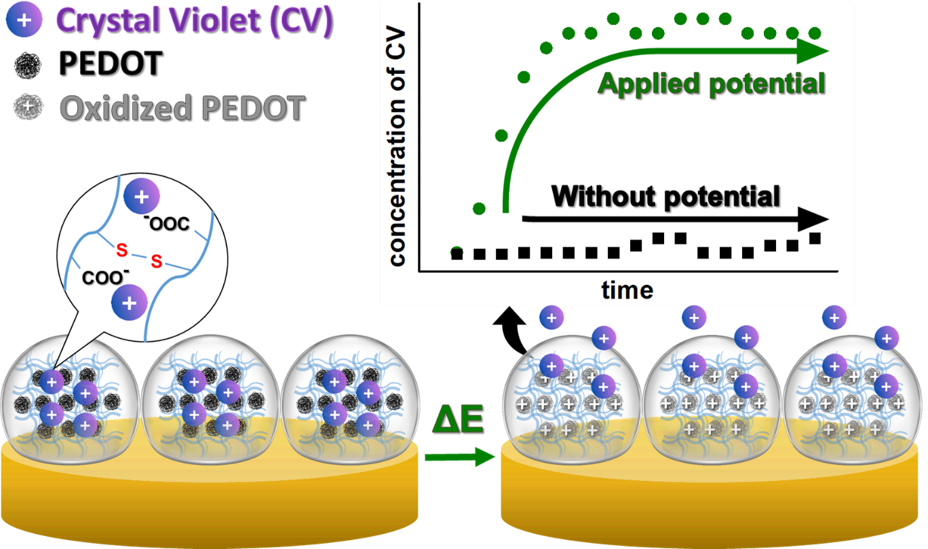Article in ACS Applied Materials & Interfaces (2025)
25 06 2025
Polymer microgels are spherical, three-dimensional structures with sizes comparable to colloidal particles. Some of them are classified as “smart” materials due to their sensitivity to various environmental factors. A particularly notable subgroup among microgels consists of electroactive systems containing electroactive compounds integrated into the polymer network. Electroactive microgels anchored to conductive surfaces are being intensively studied for applications such as sensors, biosensors, logic gates, and advanced drug delivery systems.
Researchers from the Faculty of Chemistry University of Warsaw: Paulina Gwardys, Kamil Marcisz, Damian Jagleniec, Jan Romański and Marcin Karbarz in article entitled Electroactive and Thermoresponsive Hybrid Microgel on a Gold Surface for Electrochemically Controlled Release of Active Substance published in ACS Applied Materials & Interfaces have shown an electrochemically induced system for the release of a model compound from a microgel monolayer immobilized on an electrode surface.
The obtained microgel, exhibiting both thermoresponsive and electroactive properties, was based on N-isopropylacrylamide, sodium acrylate, and a cystine derivative. The conducting polymer poly(3,4-ethylenedioxythiophene) (PEDOT) served as the electroactive center. The microgel was immobilized on a gold electrode surface via chemisorption, enabled by disulfide bridges present in the cross-linking agent. Subsequently, a positively charged model compound—crystal violet—was incorporated into the microgel monolayer structure through electrostatic interactions with carboxyl groups in the polymer network. Upon applying an electrochemical potential to the microgel-coated electrode, oxidation of the conducting polymer occurred, generating positive charges. These additional charges weakened the existing electrostatic interactions between the microgel network and the dye molecules, facilitating their release into the surrounding environment. As a result, the obtained system demonstrates exceptional potential as a platform for the construction of advanced, electrochemically controlled release systems. Particularly significant is the ability to precisely control the amount of released substance via an electrochemical signal, which considerably enhances the functionality of this approach.
The developed material holds great application potential in biomedicine, especially in the context of next-generation electrochemical devices such as intrabody drug delivery implants or transdermal delivery platforms.
P. Gwardys, K. Marcisz*, D. Jagleniec, J. Romański, M. Karbarz*, Electroactive and Thermoresponsive Hybrid Microgel on a Gold Surface for Electrochemically Controlled Release of Active Substance, ACS Applied Materials & Interfaces 2025 DOI: 10.1021/acsami.5c06165.
https://doi.org/10.1021/acsami.5c06165

